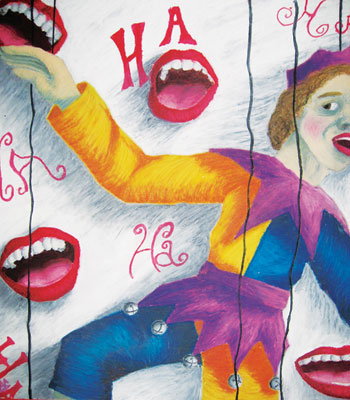All Nonfiction
- Bullying
- Books
- Academic
- Author Interviews
- Celebrity interviews
- College Articles
- College Essays
- Educator of the Year
- Heroes
- Interviews
- Memoir
- Personal Experience
- Sports
- Travel & Culture
All Opinions
- Bullying
- Current Events / Politics
- Discrimination
- Drugs / Alcohol / Smoking
- Entertainment / Celebrities
- Environment
- Love / Relationships
- Movies / Music / TV
- Pop Culture / Trends
- School / College
- Social Issues / Civics
- Spirituality / Religion
- Sports / Hobbies
All Hot Topics
- Bullying
- Community Service
- Environment
- Health
- Letters to the Editor
- Pride & Prejudice
- What Matters
- Back
Summer Guide
- Program Links
- Program Reviews
- Back
College Guide
- College Links
- College Reviews
- College Essays
- College Articles
- Back
Tim Burton: A Documentary
Tim Burton has made many dark yet enchanting fairy tales for people of all ages, from Edward Scissorhands to Corpse Bride. Somehow, his films give a thrill to anyone who watches, but also a heartwarming message wrapped up in it all. Tim Burton’s style, shown with music, lighting, and much more, has made a huge impact on the film industry by telling interesting stories with a disturbing twist.
In Burton’s film Beetlejuice, music and special effects are used to set the mood. It is a very goofy yet slightly scary film. In the “Day-O” scene, characters become possessed by ghosts and start singing a strange song (Beetlejuice, Directed by Tim Burton, The Geffen Film Company, 1988). This makes the audience laugh and lightens up the mood. However, there is one scene where the main characters, Adam and Barbara, are in the waiting room and see many undead creatures. Now, the mood is more dark and eerie (Beetlejuice, Directed by Tim Burton, The Geffen Film Company, 1988). To conclude, many different elements are used to set the mood in Tim Burton’s film Beetlejuice.
In Alice in Wonderland, Tim Burton takes a classic animated Disney movie and creates a live action sequel. In this film, lighting and framing shots change the way the viewer sees and feels. In scenes with the Red Queen, the lighting is bright and colorful, with electric colors, because she is powerful and doesn’t have to deal with all of the hardship (Alice in Wonderland. Directed by Tim Burton, Walt Disney Pictures, 2010). However, in scenes where Alice is with characters such as the Mad Hatter, the lighting is dark and more black and white because of the poverty under the Red Queen. Changes in lighting change the way viewers feel during certain parts of the movie. When the Red Queen is present, there are many close up shots as well as long shots (Alice in Wonderland. Directed by Tim Burton, Walt Disney Pictures, 2010). Close ups allow us to see expressions of terror on the characters’ faces, while longshots let us see the big rooms inside of the castle. In conclusion, lighting and camera movements can be used to change perspective in a film.
Tim Burton’s animated films, such as Corpse Bride and Frankenweenie, use stop motion claymation to provide a unique feel to the movies. One scene in Corpse Bride contains a song called “Remains of the Day” (Corpse Bride. Directed by Tim Burton and Mike Johnson, Warner Bros., 2005). The lights cast a shadow on the clay figures, and the combination of the clay and lighting make the characters and setting look realistic, or even 3D. In Frankenweenie, there is a scene where Sparky, the main character’s dog, comes back to life (Frankenweenie. Directed by Tim Burton, Walt Disney Pictures, 2012). This scene is extremely detailed and realistic, because it is made out of clay. Overall, stop motion clay makes for a great animated film.
Tim Burton has left a mark on the film industry with his unique films and how he uses different film aspects to set the mood in them. In summary, he is a fantastic director and can cover many different types of films, from animated fairy tales to fun Disney movies and even horror/action movies. In conclusion, Burton’s style of writing and directing is definitely a special one.
Works Cited:
Burton, Tim, director. Beetlejuice. The Geffen Film Company, 1988.
Burton, Tim, director. Alice in Wonderland. Walt Disney Pictures, 2010.
Burton, Tim, director. Corpse Bride. Warner Bros., 2005.
Burton, Tim, director. Frankenweenie. Walt Disney Pictures, 2012.

Similar Articles
JOIN THE DISCUSSION
This article has 1 comment.

I was assigned by my Language and Literature teacher to choose between Tim Burton, Edgar Allen Poe, and O. Henry. I chose Tim Burton and wrote about how his style of directing and writing has influenced the film industry.